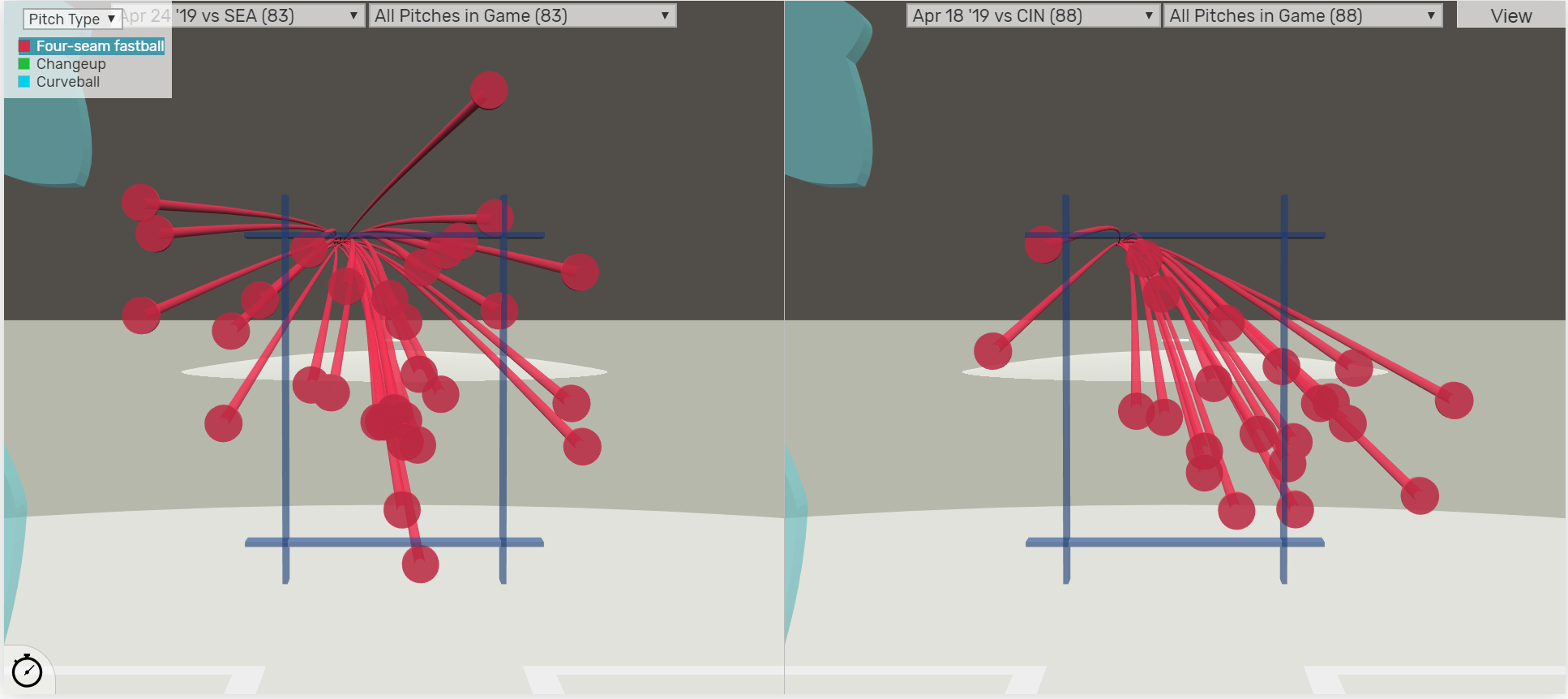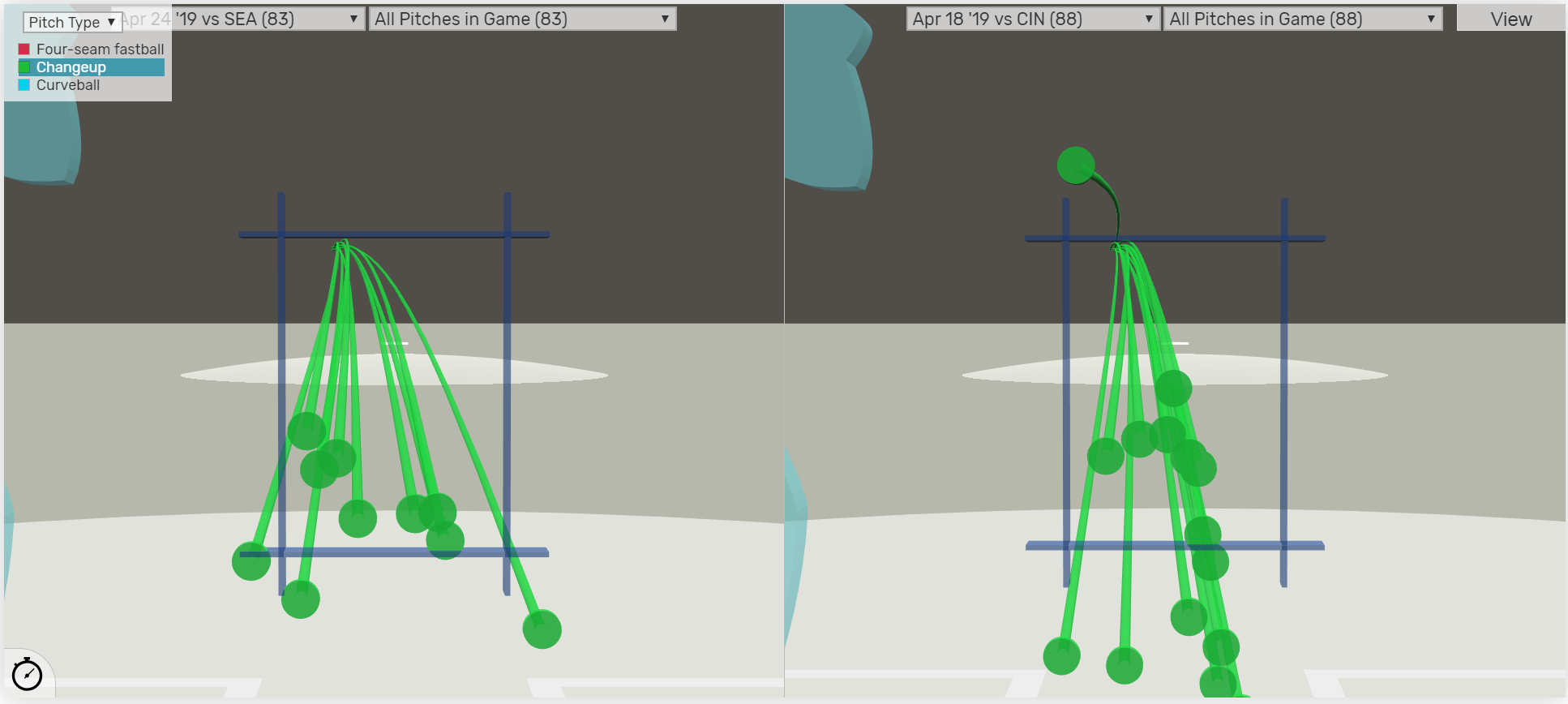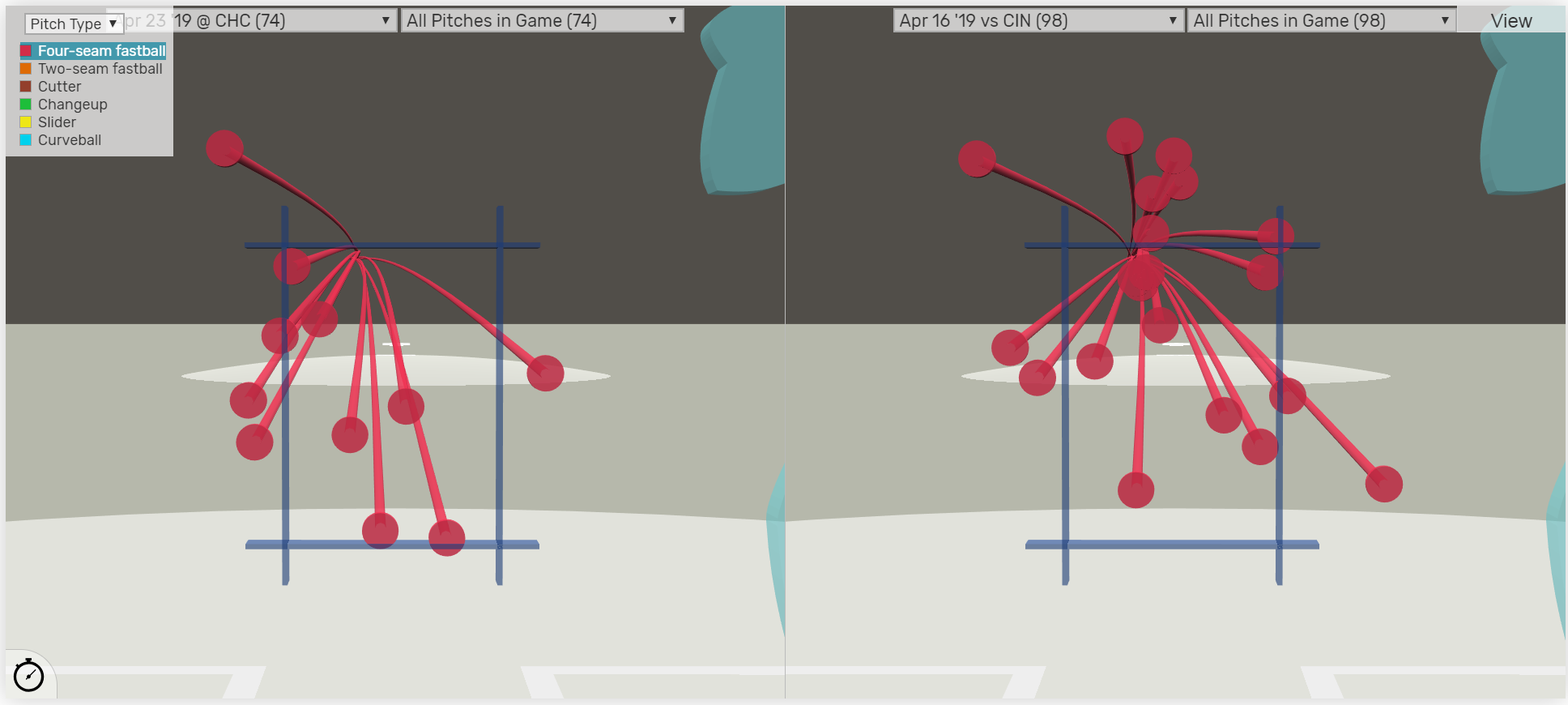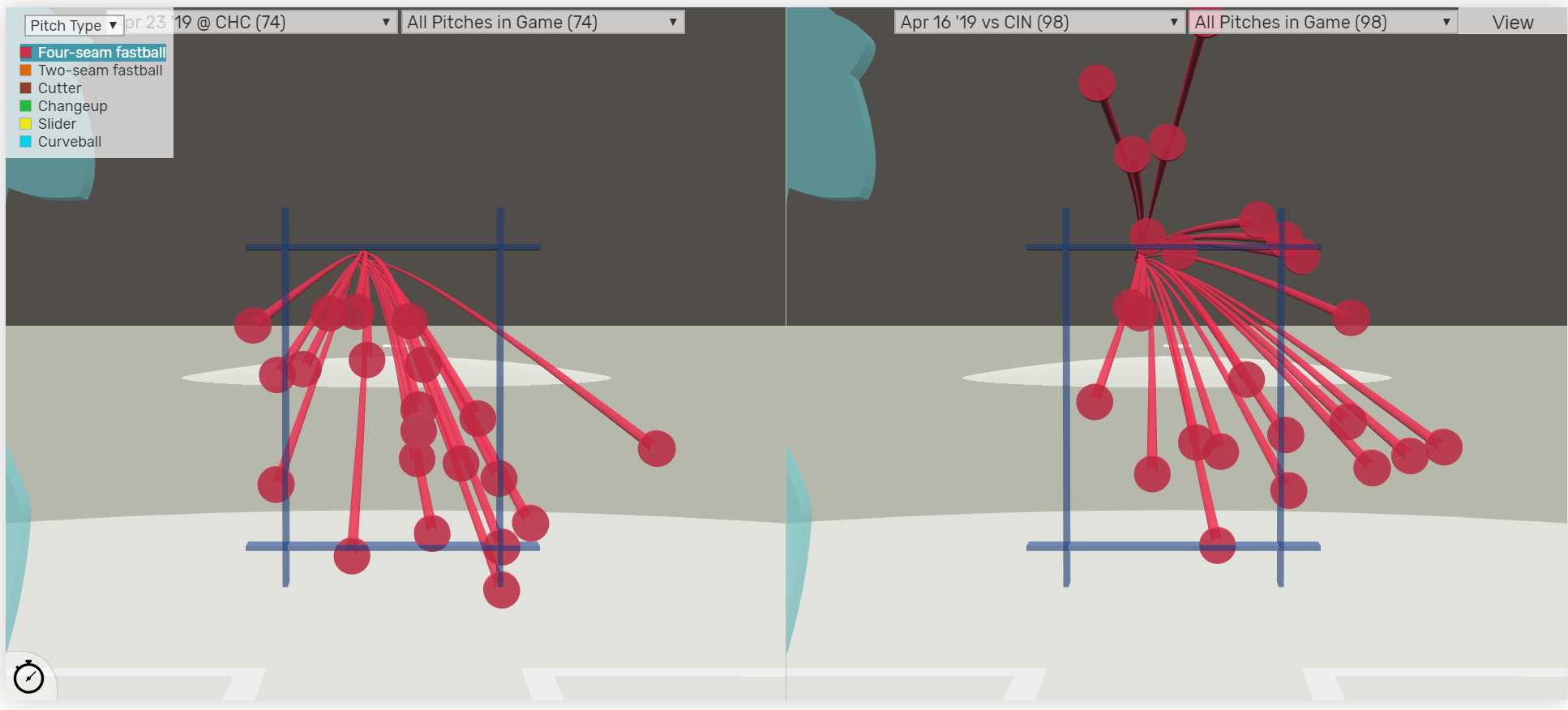Welcome to this week’s edition of the Plate Discipline Leaderboard, and may the fourth be with you all. If you’re new to this post, the calculations of each metric are outlined below:
Plate Discipline A
O-Swing%
Inverse Contact % = (100% – Contact %)
2SwStr+1=(2*SwStr%+1%)
F-Strike %
The standard deviations above/below average for everything aside from F-Strike% is multiplied by three. Then, those three numbers are added to the standard deviation above/below average for F-Strike%, and that total is divided by four.
Plate Discipline B
Inverse xSLG = (100% – xSLG %)
The standard deviation above/below average is multiplied by one and one half.
Final Plate Discipline
The average of Plate Discipline A and Plate Discipline B.
[table id=73 /]
Since TablePress only allows an import of the first 100 rows, I’m attaching the link to the full table here. Next week the leaderboard will look different, as the minimum IP will remove Mike Clevinger from the top of the board. Now, let’s look a little deeper on a couple of guys.
Chris Paddack, San Diego Padres
Paddack only comes in at No. 35 on The List, but his plate discipline skills rank No. 17 among starters with at least 10 innings pitched. Of all the components that make up the plate discipline grade, Paddack is most elite in what carries the least weight, but starting 73.8% of your plate appearances with a strike is still effective for setting up pitch sequencing the rest of the at-bat. On the left half of the visualization below is how Paddack threw his fastball to RHH in his April 24th start, his highest by Fangraphs game score. Sure, there are a lot of pitches over the middle of the plate, but he was moving inside and outside on the batters while keeping his fastball up in the zone. Fastballs up and in the corners of the zone induce the weakest contact, which contributes to Paddack’s low xSLG despite his below average Contact %.
Sure, there are a lot of pitches over the middle of the plate, but he was moving inside and outside on the batters while keeping his fastball up in the zone. Fastballs up and in the corners of the zone induce the weakest contact, which contributes to Paddack’s low xSLG despite his below average Contact %.
 The rest of his low xSLG is explained by his changeup location, which is shown in the graphic above. The left half is once again referencing the April 24th game, where he almost exclusively located his changeup on the black to RHH. While he uses these two pitches effectively most of the time, there are instances where living in the zone as often as he does nets out negatively. Take the April 18th game for example: Paddack exclusively kept his fastball outside to RHH, and his changeup was either close to the heart of the zone or well below it. This luckily didn’t hurt him that much, but when he didn’t change his fastball location much for LHH, they took him yard.
The rest of his low xSLG is explained by his changeup location, which is shown in the graphic above. The left half is once again referencing the April 24th game, where he almost exclusively located his changeup on the black to RHH. While he uses these two pitches effectively most of the time, there are instances where living in the zone as often as he does nets out negatively. Take the April 18th game for example: Paddack exclusively kept his fastball outside to RHH, and his changeup was either close to the heart of the zone or well below it. This luckily didn’t hurt him that much, but when he didn’t change his fastball location much for LHH, they took him yard. I think Paddack is better than his xFIP and SIERA indicate, but the 1.91 ERA is not sustainable when you’re a pseudo-two-pitch starter. There’s concern for his innings/usage, but not enough where I would say Paddack isn’t worth pursuing if you don’t own him already.
I think Paddack is better than his xFIP and SIERA indicate, but the 1.91 ERA is not sustainable when you’re a pseudo-two-pitch starter. There’s concern for his innings/usage, but not enough where I would say Paddack isn’t worth pursuing if you don’t own him already.
Recommendation: Hold/Buy
Kenta Maeda, Los Angeles Dodgers
Last week Daniel was asked if we could address either Maeda or Sandy Alcantara because of the large disparity seen between their place on the Plate Discipline Leaderboard and the ranks of a different methodology. I flipped a coin, saw it landed tails, and said, “I don’t want to write about Alcantara, so I’ll just dive into Maeda.”
Throughout his career, Maeda has struggled more against LHH than he has against RHH. Sure, the sample size is smaller by ~70 batters faced, but a wOBA difference of .331 and .268 (against LHH and RHH respectively) is significantly worse. Why do LHH give Maeda so much trouble? Well, his slider was a bonafide Money Pitch in both 2017 and 2018. He threw it over 40% of the time to RHH, but only 12% of the time to LHH; this season, he’s only thrown it 5% of the time to LHH, while also decreasing the usage of other secondary pitches in favor of his changeup.
So it’s his changeup that’s getting him into trouble?No, Maeda’s changeup was his best by pVal last season, and is one of his two positive pVal pitches this season. Oddly enough, Maeda has faced more LHH than he has RHH this season, and as history would suggest, he has performed worse against LHH than RHH. Ah, so that’s why his ERA is in the mid-4’s? Surprisingly, the answer isn’t that easy. His xFIP against each is nearly identical despite the wOBA difference, so it needs to be something more consistent than an anomaly in total batters faced.


Maeda’s fastball has been getting crushed this year. The wOBA against his four-seamer is .487, which is 28% worse than last season’s career worst mark of .379. There is hope for some positive regression since his xwOBA against his four-seamer is .396, but that’s still not a mark to be excited about. If Maeda starts working batters with his fastball like he did in the April 16th game more consistently, then he’s a good buy low target. Since most of his games look more like the April 23rd game though, I’d be looking to move him for another struggling pitcher who has a better chance of turning it around. The ~12% swing and miss on fastballs in the zone is way too low when it’s getting hit as hard as it does so consistently.
Recommendation: Sell
